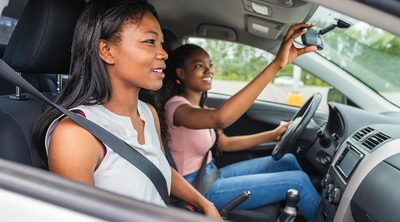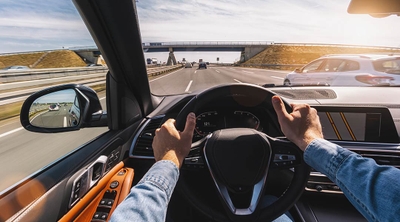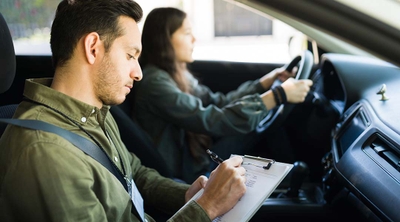Learning how to drive stick
5 min read
Learning to drive a manual transmission car can seem intimidating, especially because people often view it as a rite of passage or difficult skill. Many people who choose to buy and drive a manual car are interested in having better control of the driving experience. Manual cars also sometimes cost less than a vehicle with an automatic transmission. While it takes some practice to learn how to drive a manual car smoothly, it’s not much more difficult than driving an automatic — once you get the hang of it. The sign that you’ve mastered how to drive a manual car is that you do it instinctively, and you no longer need to think about the steps or what gear to use.
Where can I go to learn to drive manual transmission?
You’ll need access to a car with a manual transmission and an experienced manual driver who can give some instruction. The first step is to go to a flat, empty parking lot as you would in learning to drive any car. If you don’t know anyone with a manual transmission car, you can call a professional. Many driving schools offer manual car lessons for both new and experienced drivers.
How to drive a manual car
Before you start, it’s best to familiarize yourself with the controls in a stick shift car. First, you have three pedals, not two. The third one, on the far left, is called the clutch, and it’s what allows you to change gears. Look at the car’s gear pattern — indicated on the shift knob — and press a few times on the clutch pedal. Cars differ in how much the clutch travels, and you should adjust your seat to make it easy to press the clutch all the way in.
Familiarize yourself with the clutch
Use your left foot for the clutch and not for any other pedals. When you’re not “engaging” (i.e. using) the clutch to switch gears or start the car, don’t rest your foot on it. When you engage the clutch, push it into the floor.
Familiarize yourself with the gear shifter
Cars can differ in the number of gears, but most use the same basic layout. First gear will be in the top left of the main gear arrangement with second gear below it. Third will be in a position right of first with fourth gear below (to the right of second) and so on up to the highest gear. Older cars may only have four gears, but most have five or more. Higher gears will usually follow the pattern described above: odd-numbered gears on top, even on the bottom, ascending from left to right. If you’re unsure, look at the top of the shift knob, which should have a diagram showing the positions of each gear.
The placement of the reverse gear is more variable. Many cars with a 5-speed transmission place reverse gear where sixth gear would go — in the bottom right, below fifth — but not all do. If your car has reverse somewhere else — like to the left of first gear — there’s usually an extra step to get there, like pushing down on the shifter or lifting a switch below the shift knob so that you don’t accidentally shift into reverse without meaning to.
You can put the car in neutral by not selecting any gear. You’ll know it’s in neutral because the shifter will feel loose and be able to travel side to side if you push on it gently.
How to drive a manual car smoothly
There are two shifting errors common to beginners that can make the driving experience rougher than it should be. Both can be solved by selecting a gear that is appropriate for the speed the car is currently traveling.
Start the car
Put the shifter in neutral, then press the brake with your right foot (or put the emergency brake on) and press the clutch in with your left foot. While holding the clutch in, turn the key in the ignition to start the car. Once the motor is running, you can let the clutch out and get ready to drive.
Get the car moving from a stop
This is often the trickiest part to get the hang of when learning how to drive a manual car. Push the clutch in and hold it while shifting the car into first gear. Press lightly on the gas and let the clutch out smoothly and gradually. You’ll feel it grab, and the car will start moving. When this happens, continue to let the clutch out while you gradually apply a little more gas, and you’re on your way. The first few times you try this, you may stall the engine. If that happens, you either have let the clutch out too quickly or didn’t apply enough gas. Put the car in neutral, start the engine, and try again.
Upshifting and downshifting
As the car gains speed, you’ll need to move to a higher gear — usually the next gear up. Depress the clutch completely, move the shift knob to the next gear, and smoothly let the clutch out again. While shifting, don’t rev the engine because driving up the engine RPMs can make it hard to shift and may damage the engine. If you shift into a high gear while traveling slowly, you may feel a sort of jerking rumble. That’s the result of the engine struggling to stay active at very low RPMs. This can also happen if you brake to a low speed without shifting. In either case, shift to a lower gear.
As the car slows down, you’ll need to downshift. Follow the same procedure as above — clutch in, shift, clutch smoothly and gradually — and you should be OK. If you shift into a low gear while traveling too fast, the car will “buck” or jolt. That’s the result of the low gear suddenly spinning up to a high speed and the engine suddenly slowing down as the lower gear can’t deliver the car’s current speed at reasonable RPMs. When you downshift, make sure that you’re going at a reasonable speed for the new gear before you let the clutch out. As you get better at gauging this, you can use a small press on the accelerator to help match the engine’s RPMs and the new gear for an even smoother transition.
Stopping and parking
When you want to come to a complete stop, start by braking as normal. When the car is nearly stopped, press the clutch in, shift to neutral, and finish braking to a stop. If you’re stopping in a high gear, you may want to put the clutch in a little earlier to avoid the rumble described above.
If you’re parking, turn the car off now, press the clutch, and put the car in gear. You can also engage the clutch, put the car in gear, and then turn it off before releasing the clutch. The important thing is not to leave the car in neutral when parked. If the parking brake fails or if the car gets hit, leaving the car in neutral can make it easier for the car to roll away.
Is it worth learning how to drive a manual car?
There are fewer manual cars on the road in America than ever. However, compared to automatic transmissions, manuals are still much more popular in many parts of the world, particularly in Europe and Asia. If you travel abroad for work or vacation, you may need to know how to drive a manual car since automatics can be expensive and hard to find. Learn more about the difference between manual vs. automatic transmission cars.
Travel isn’t the only reason to learn to drive stick. As you gain experience with manual transmissions, you’ll develop a better sense of when to use which gears and why. Low gears, for example, are better suited to going uphill because they generate more torque at a lower speed. Even if you typically drive an automatic, that knowledge can be useful if you ever need to use the low-gear settings on your automatic transmission.




